The BearExtender Turbo Brings 802.11ac Wi-Fi to Older Macs
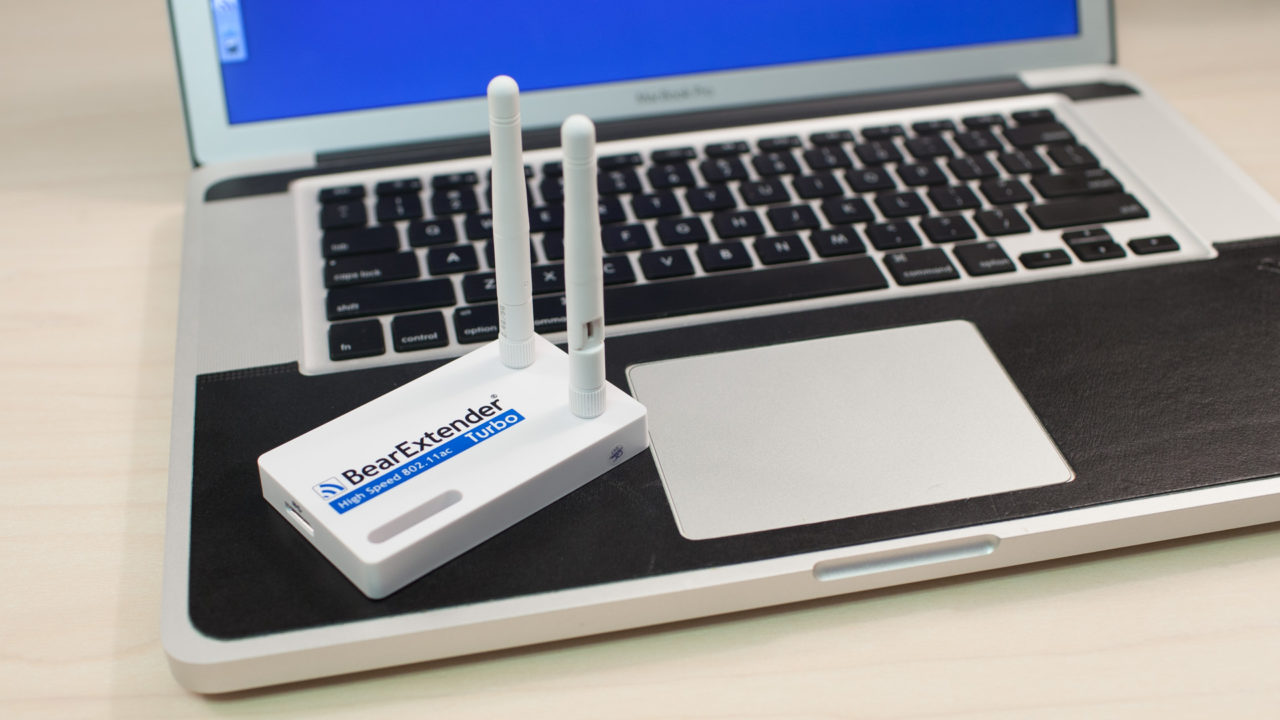
The new 802.11ac Wi-Fi networking standard has been available to consumers for several years, but only recently did Apple add the feature to its line of portable and desktop Macs. Introduced with the 2013 MacBook Airs at last year’s WWDC – and subsequently rolled out to the 2013 model year MacBook Pro, iMac, and Mac Pro – 802.11ac provides much faster bandwidth and network robustness than the old 802.11n standard.
While new Mac owners with a prerequisite 802.11ac router can enjoy all of 802.11ac’s benefits, the millions of Mac owners with pre–2013 models have been left out in the cold. Thankfully, the new BearExtender Turbo is here to offer at least some of these owners a novel solution, and the promise of near-native 802.11ac speeds. The company loaned us a unit for review, and we’ve spent the last few weeks putting it through our testing process. Read on for our impressions, benchmarks, and pictures.
Overview
The BearExtender Turbo is an $80 USB device that contains an external 802.11ac chip and antennas. With the ability to upgrade a Mac’s internal Wi-Fi card a practical impossibility, the BearExtender Turbo’s goal is to bring that same 802.11ac capability to an older Mac via USB.
The device itself is tiny, with a footprint just a hair longer than a standard sized credit card. The official measurements given by BearExtender list 3.5 inches wide, by 2.2 inches deep, by 0.4 inches tall (not including antennas).
The base is constructed from white plastic, a design which would have blended in great with Apple products from 2004, but clashes a bit in today’s world of aluminum and glass devices. Two adjustable, and removable, antennas extrude from the top-right side.
A single “Micro B” USB 3.0 port is accessible on the left side, and users will find a 2-foot USB 3.0 cable in the box, along with a CD containing the required software and setup instructions.
the BearExtender Turbo is not a perfect substitute for native 802.11ac, but it Can offer a large improvement over 802.11n
Overall, the BearExtender Turbo is lightweight, almost surprisingly so. The plastic construction and small form factor result in a net weight of just 1.8 ounces. This gives the device an almost cheap look and feel, especially compared to solid heft and density of some modern Macs. The BearExtender Turbo is so light, in fact, that the stiffness of the USB cable can frequently cause the base to flip up on one end, because there’s simply not enough weight to counteract the moderate torque from the cable.
Thankfully, such an occurrence doesn’t affect the functionality of the device, and with a little careful cable placement, most users won’t have an issue. Plus, the BearExtender Turbo’s size makes it ideal for travel, and the less weight added to our laptop bags, the better.
Setup & Usage
Unfortunately, the BearExtender Turbo isn’t truly “plug and play;” users will need to install the company’s software for it to work.
Setup consists of installing the BearExtender software (which requires a reboot), and then enabling a new network service in System Preferences > Network (the software guides you through this process). The magic of adding 802.11ac to older Macs requires specialized drivers and software, so once everything is installed, you’ll use the BearExtender Turbo software, and not OS X’s built-in Wi-Fi management, to join and configure your wireless networking connections.
In addition to relearning old Wi-Fi management habits, the necessity of the BearExtender Turbo’s software also leads to a few issues. First, you’ll need to launch the BearExtender app to connect to a new to a Wi-Fi network or reconnect if the connection is lost. If the app is quit or crashes, you won’t be able to reestablish or change your settings until the app is relaunched.
Second, it takes a bit longer to get a valid connection, compared to the built-in OS X network manager, when waking a Mac from sleep. In our testing with a 2013 13-inch MacBook Air, it took about 10 seconds from opening the lid until we could get a network connection with the BearExtender Turbo, compared to less than 5 seconds with the built-in networking. This is a minor difference, to be sure, but one of several quirky tradeoffs to using an aftermarket 802.11ac solution.
Once it’s set up and working, however, the BearExtender Turbo performs as advertised. We had no problems connecting to 802.11n or 802.11ac networks in both the 2.4GHz and 5GHz bands, and there were no software conflicts or other issues to consider; from the Mac’s perspective, the BearExtender Turbo is just another network interface, and just about all apps and services work the same as with a native Wi-Fi card.
Benchmarks
To determine how well the BearExtender Turbo performs, we set up a series of tests to measure bandwidth in both synthetic and real-world terms. Our testing equipment included a 2011 15-inch MacBook Pro (without 802.11ac), a 2013 13-inch MacBook Air (with 802.11ac), a 2013 Mac Pro to act as the server for our transfer tests, a 2013 802.11ac AirPort Time Capsule, and a 5th Generation 802.11n AirPort Extreme.
First, let’s start off with JPerf, a bandwidth testing tool that gives us maximum bandwidth results for a given configuration. These tests were performed with the 2013 MacBook Air, and we looked to compare 802.11n performance (in both the 2.4GHz and 5GHz bands), the Air’s native 802.11ac performance, and the BearExtender Turbo. In these configurations, the BearExtender was connected to the MacBook Air via USB 3.0.
As you can see, the BearExtender Turbo is not a perfect substitute for native 802.11ac – the native chip is about 17 percent faster – but it does offer a large improvement over 802.11n speeds. While interesting, however, these tests represent the maximum synthetic performance from a given setup, and not the kind of speeds that an average user could expect. We therefore sought to test several real-world scenarios as well.
A common activity on a local network is the transfer of small files, such as images, from one computer to another, or to a backup NAS device. We set up a folder of 1,000 JPEG images of approximately 3MB each. This folder was placed on the MacBook Air’s SSD drive and copied via AFP to the Mac Pro, which was wired directly to the AirPort router. The transfer was performed three times for each network configuration and timed with a stopwatch. The results reported in the chart below are the average number of seconds from all attempts for each configuration.
In this real-world scenario, the same pattern as the JPerf test is revealed. The BearExtender Turbo can’t quite match native 802.11ac performance, but it offers an impressive improvement over 802.11n speeds.
Another common task is the transfer of large files, such as videos. We used the iTunes HD 720p version of 2009’s Star Trek to test bandwidth in megabits per second. As before, all tests were performed three times and the results were averaged to form the chart below.
Here, the BearExtender Turbo starts to reveal some limitations. While the 4.45GB movie transferred at an average of 435 megabits per second with native 802.11ac, it only managed about 263 megabits per second with the BearExtender Turbo. That’s still about 19 percent faster than 802.11n at 5GHz, but it’s a much smaller advantage in this test.
The BearExtender Turbo has dual antennas that look like they could be more capable than the integrated antennas in MacBooks. We therefore wanted to also test to see if the BearExtender could offer users improved performance at long distances, allowing for more flexibility in home network setups. After all, the company’s first products were devices aimed at improving the reception of weak Wi-Fi signals.
The TekRevue offices are located in a high-rise commercial building with hundreds of competing wireless networks from other building tenants and neighboring businesses. We tested bandwidth from two locations:
Location 1: out of our office and down the hall about 30 feet. From this location, the signal must pass through three walls and compete with two other routers in close proximity.
Location 2: the far corner of the building, approximately 120 feet away through six walls, an elevator shaft, and several more competing routers. This is the farthest we could get while still able to receive a signal using the MacBook Air’s native Wi-Fi.
Note that 2.4GHz Wi-Fi offers longer range than its 5GHz counterpart, so these tests were performed at 802.11n 2.4GHz. Remember, we’re not concerned only with speed here, but rather we want to see usable speed at a distance.
Our office setup is more challenging for Wi-Fi connectivity than that of the average residential user. Still, the BearExtender Turbo does appear to offer some benefits when it comes to range. Both the BearExtender and the Air’s integrated Wi-Fi performed about the same from Location 1. But at the challenging Location 2, the BearExtender offered 203 percent faster speeds. Of course, intra-network file transfers at 9.7Mbps will be grueling, but that’s a perfectly acceptable speed for surfing the Web from an area which might otherwise be unusable.
USB 3.0 is not yet ubiquitous enough to make the BearExtender Turbo an attractive upgrade for the majority of Mac owners
Before we conclude, we wanted to examine a very important factor that we have thus far overlooked. Note again that all of the tests above were performed while the BearExtender Turbo was connected to the MacBook Air’s USB 3.0 port. But there’s only one generation of Macs (the 2012 models) that have USB 3.0 but not 802.11ac. So what about performance on older Macs with only USB 2.0? We won’t leave you in suspense: the results aren’t good.
Here’s another JPerf test using the BearExtender Turbo connected via USB 2.0 to the 2011 15-inch MacBook Pro:
Those results are not mistakenly swapped; the BearExtender Turbo on an 802.11ac network, connected via USB 2.0, is actually slower than the MacBook Pro’s native Wi-Fi while connected via 802.11n at 5GHz. The BearExtender software reports a solid connection at a maximum negotiation of 867Mbps, but the USB 2.0 bandwidth limit, plus any software overhead, results in slower speeds.
This trend is not limited to the synthetic benchmarks. Here’s our video file transfer test using the same USB 2.0 setup:
Again, the BearExtender Turbo comes in slower, this time by about 8 percent. So while the BearExtender offers impressive performance in some scenarios, the USB interface can be a key bottleneck that must be considered.
Conclusions
The BearExtender Turbo is a relatively affordable (despite an MSRP of $80, street prices are currently hovering around $70), portable, and easy to use way to significantly improve your Wi-Fi speeds and range, but only if you own certain Mac models: specifically, the 2012-era Macs and any supported Mac that doesn’t have 5GHz 802.11n. With USB 3.0 this thing can fly, and it’s faster than 2.4GHz 802.11n, even while connected via USB 2.0. But with the USB 2.0 bandwidth bottleneck, there’s no real point in investing in the BearExtender Turbo when its performance vis-à-vis 5GHz 802.11n is considered.
And that’s a shame, because there’s really nothing that can be done to overcome these limitations. 802.11ac has simply outgrown the maximum bandwidth that USB 2.0 can offer, and USB 3.0 is not yet ubiquitous enough to make the BearExtender Turbo an attractive upgrade for the majority of Mac owners. Even those for whom the limitations don’t apply will have to keep in mind the various quirks of the BearExtender’s setup, such as the requirement to keep the device’s app open if you need to change or reconnect to a network, and the slight delay after sleep before the network connection is negotiated.
But don’t get us wrong. If your Mac meets the criteria recommended above, such as a mid–2012 Retina MacBook Pro with USB 3.0, the upgrade to the BearExtender Turbo is a no-brainer. For $70, you can significantly increase the performance of your Mac on your local wireless network. Such an upgrade won’t improve your Internet bandwidth, of course (unless you’re one of the lucky ones with a gigabit fiber connection), but your local media streaming, Time Machine backups, file transfers, and screen sharing will all be greatly improved at near-native 802.11ac speeds.
You can pick up the BearExtender Turbo right now from a variety of retailers, including Amazon and Newegg. It requires OS X 10.6 Snow Leopard or newer and USB 2.0 or higher. BearExtender offers a 45-day return policy and a 1-year warranty. Just make sure to pick up an 802.11ac router, too, if you don’t already have one.
Note: Some BearExtender Turbo owners report that the device works without drivers on Windows 8. We haven’t been able to independently verify this but we will update this note once we do. Officially, BearExtender advertises only Mac OS X compatibility.




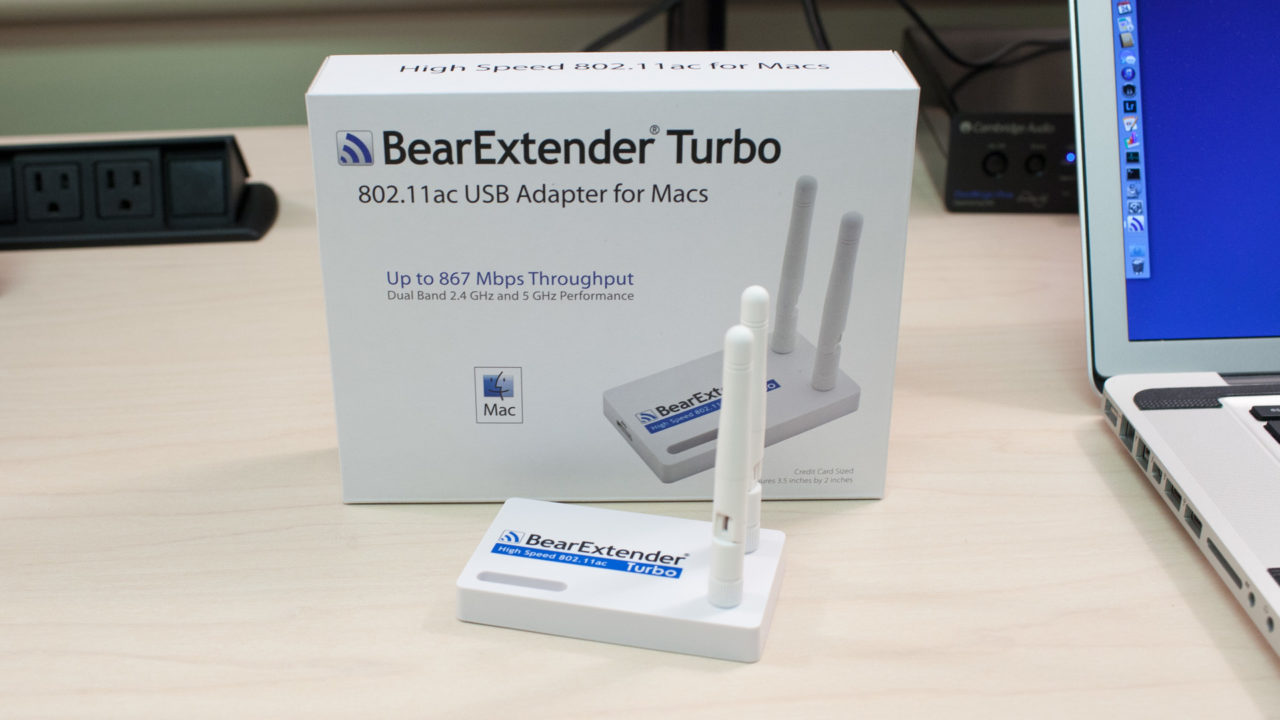
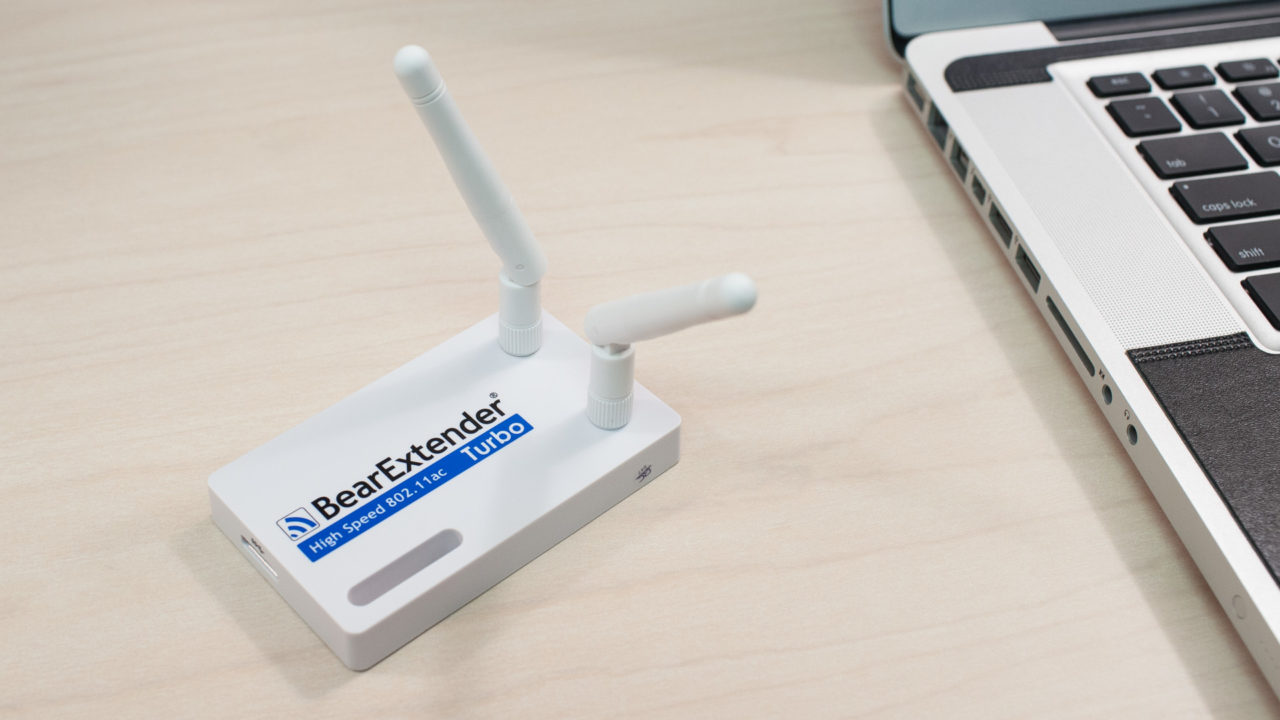
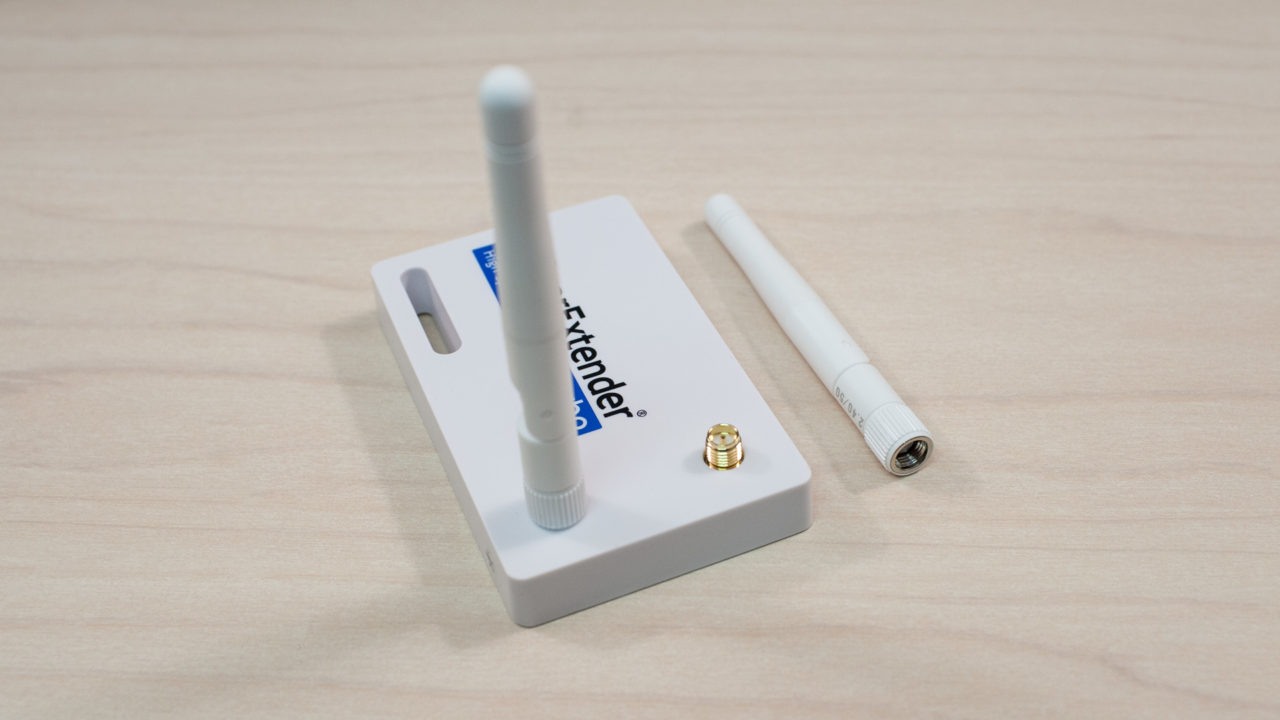
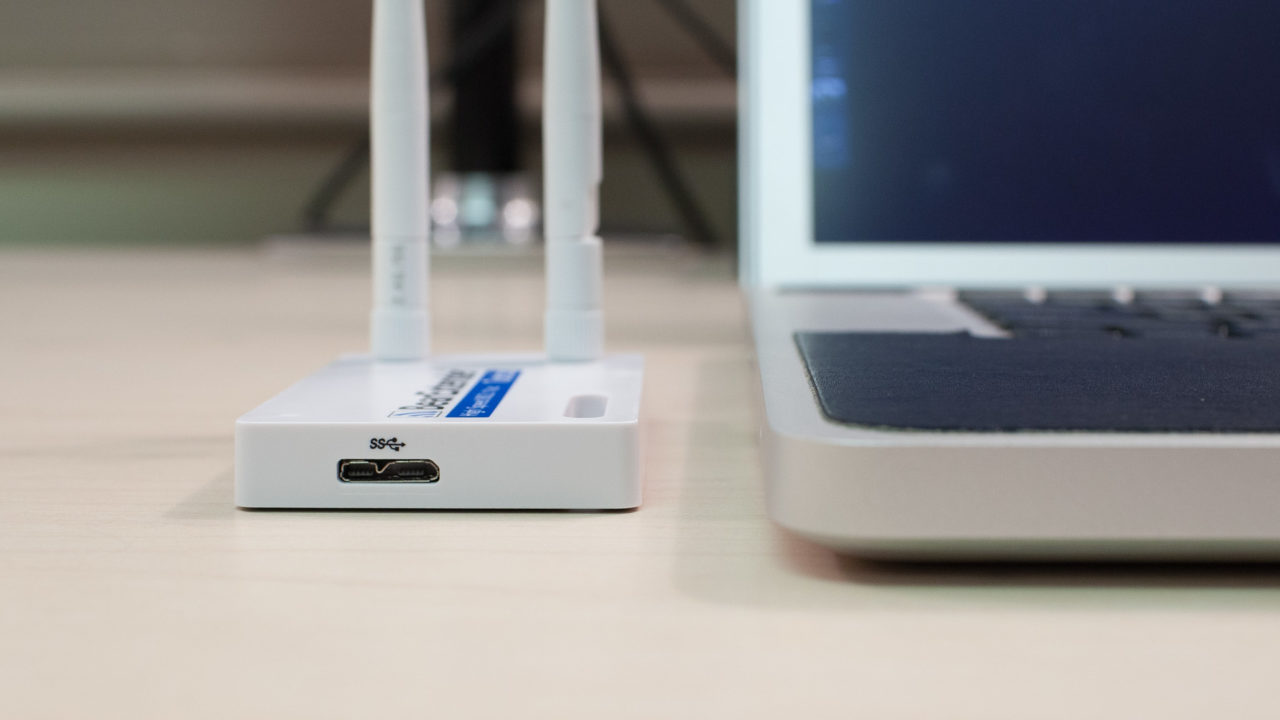
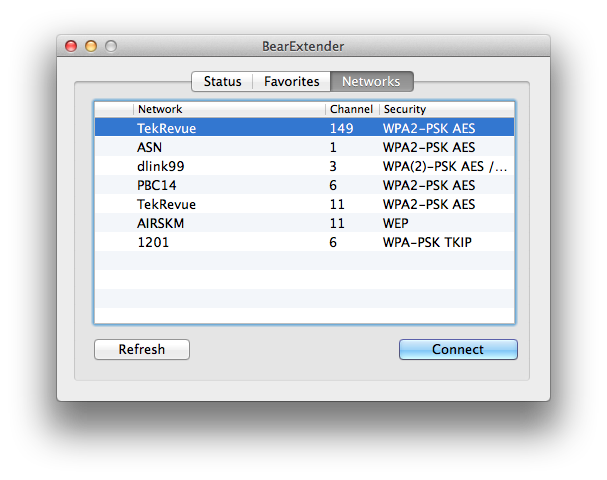
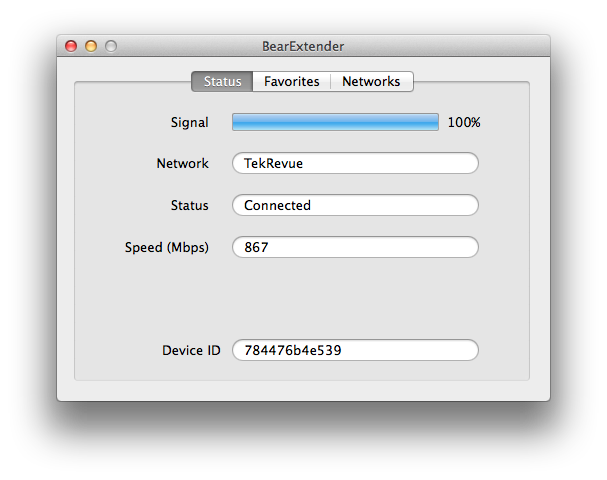
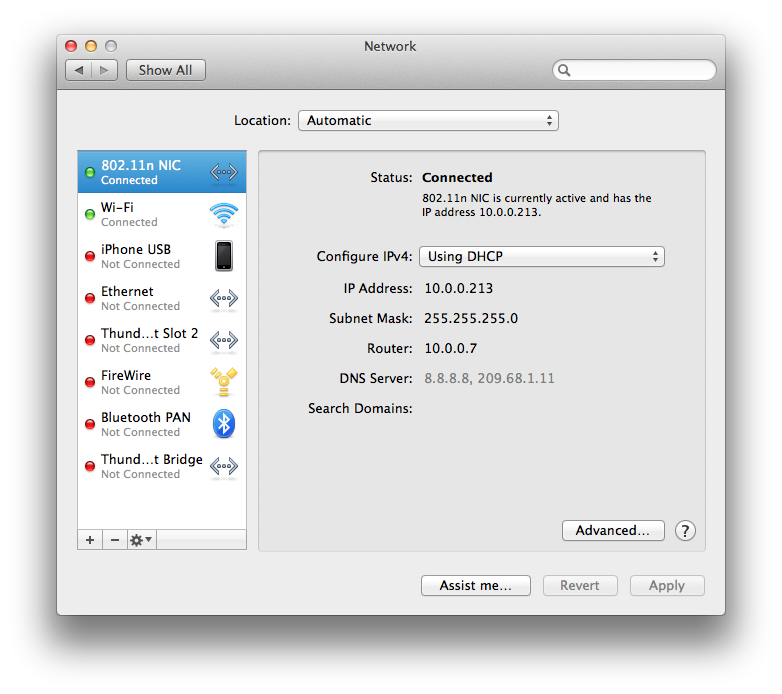
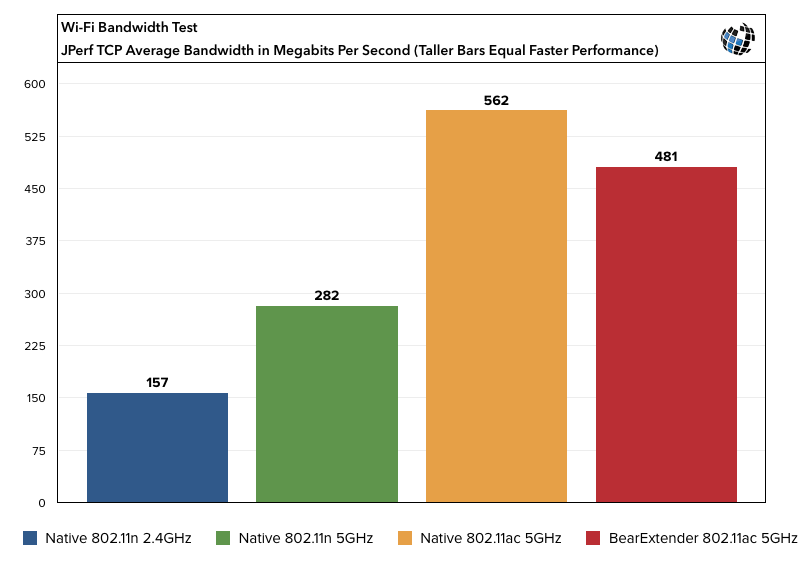
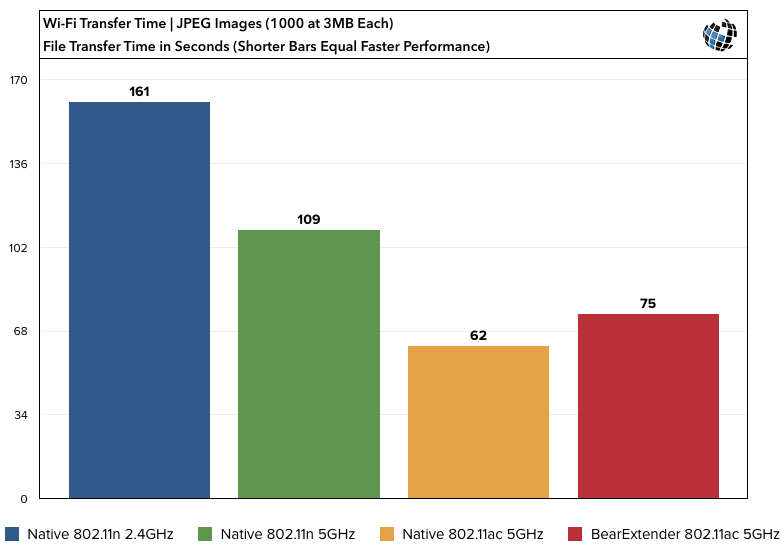
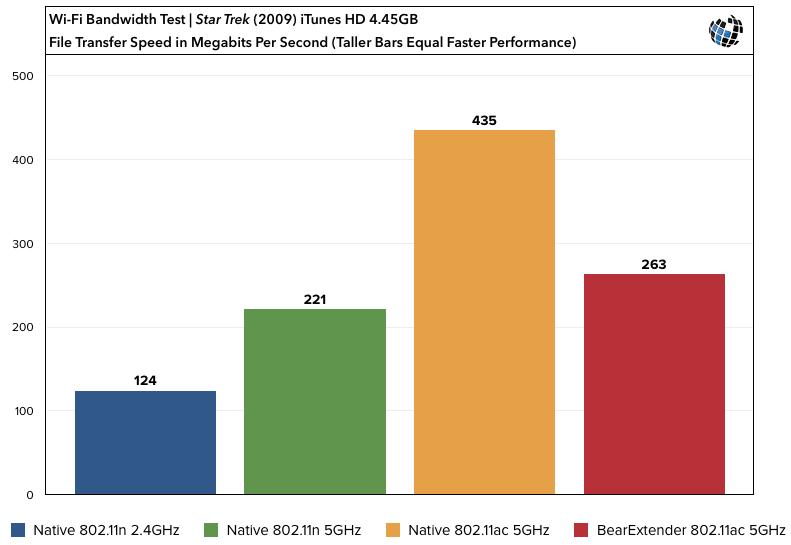
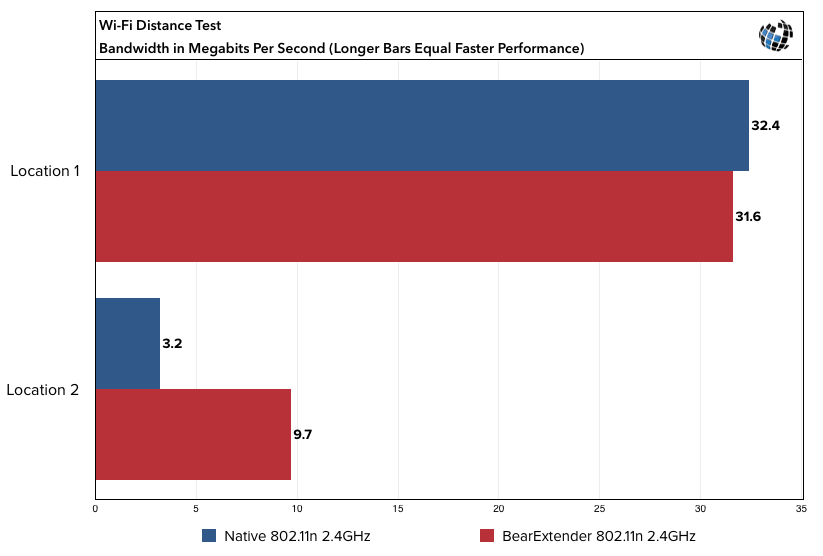
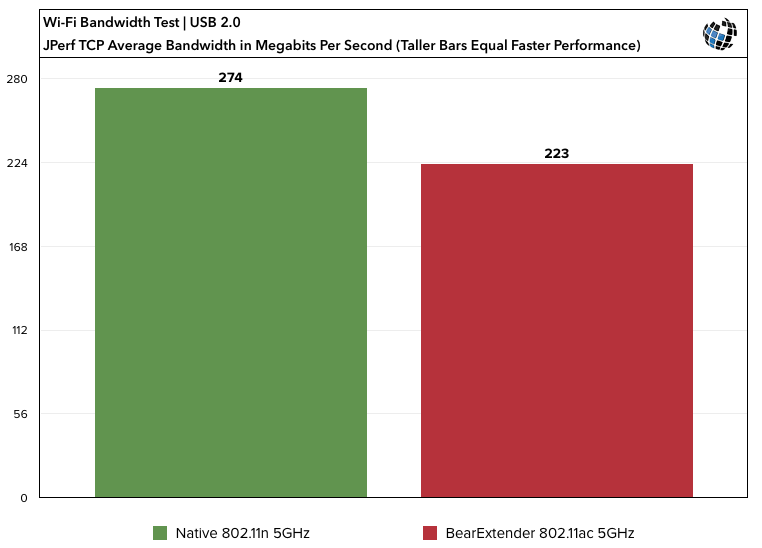
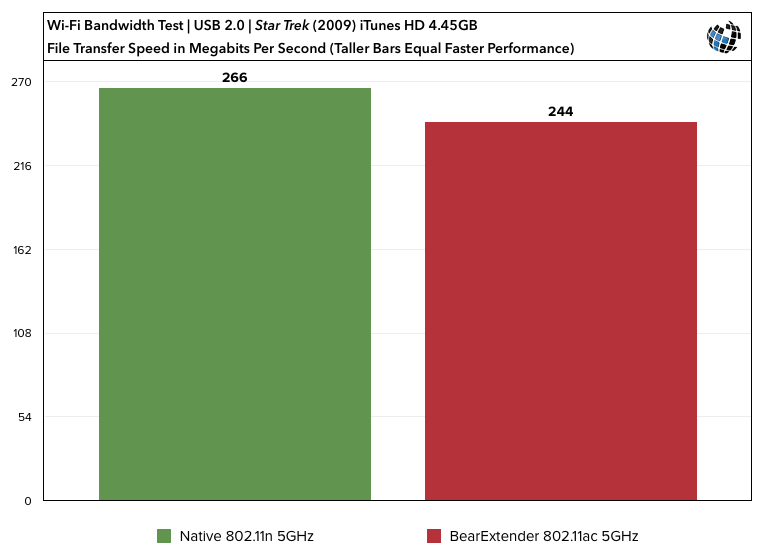




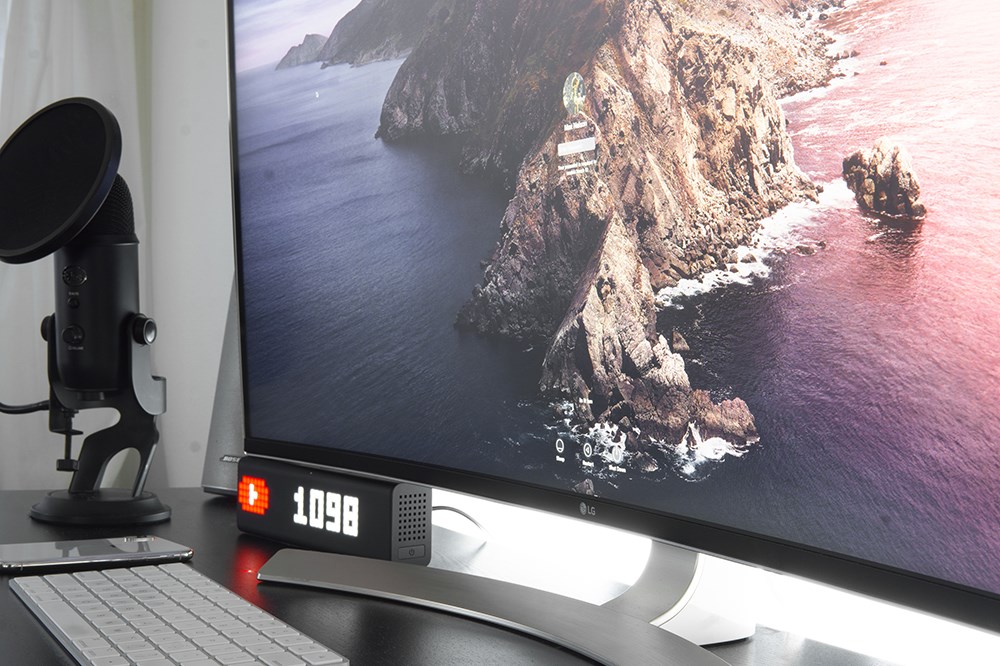








One thought on “The BearExtender Turbo Brings 802.11ac Wi-Fi to Older Macs”